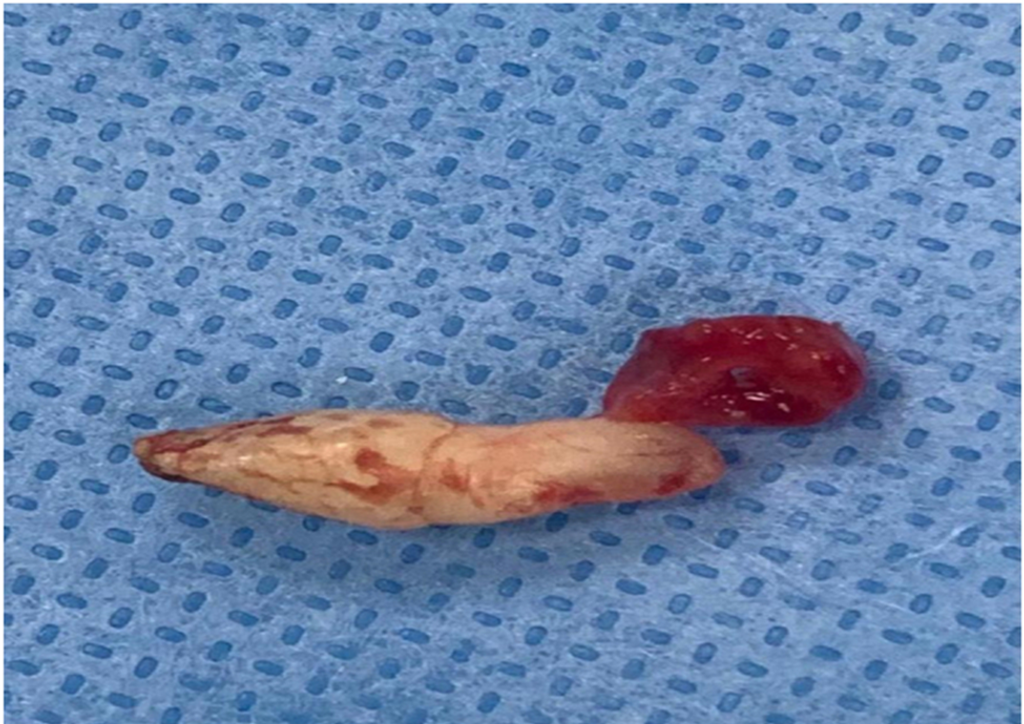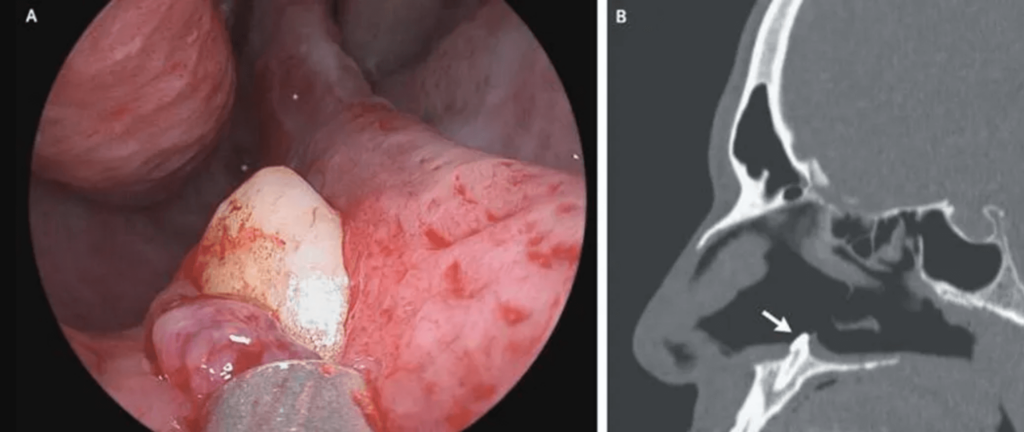After years of struggling to breathe through his right nostril, a 38-year-old man discovered the unexpected cause—a stray tooth—during his visit to clinicians at a Mount Sinai ear, nose, and throat clinic. The doctors noted in a December report in the New England Journal of Medicine that the man had not experienced any facial trauma and exhibited no visible abnormalities in the face or head.
During a more extensive examination by oral and maxillofacial surgeons Dr. Sagar Khanna and Dr. Michael Turner, the doctors discovered “a firm, non-painful, white mass” within the right nostril. It exhibited all the traits of an “inverted ectopic tooth,” indicating a tooth positioned upside-down in an abnormal location.

The patient “was shocked initially, and then happy to know that there was a solution to his issues,” Dr. Khanna, who had never encountered a case like this, told Insider. Septal issues typically cause blockages in the sinuses, “but rarely do you find a foreign body causing obstructive symptoms,” he added.

The surgeons successfully extracted the 14-millimeter tooth without complications. Three months later, the patient’s breathing returned to normal.
Stray tooth typically grow in other areas of the mouth — not the nose.
According to Australian orthodontist Dr. Peter McMahon, while ectopic teeth are not rare, they usually grow in alternative mouth areas, such as the palate, when there isn’t sufficient space along the gumline.
The most prevalent type of ectopic growth includes teeth. Most instances of ectopic tooth growth include a canine. It usually develops in the upper jaw in the wrong direction. In this unique example, doctors discovered a deviated septum combined with calcified septal spurs. During rhinoscopy, which involves inserting a camera into a nostril, the doctors found a white object projecting from the wall of the right nostril.
Genetics often contribute to the risk of orthodontic issues, including ectopic teeth. Moreover, ectopic teeth typically begin development in utero, with women being more prone to experiencing them.
Teeth in the sinuses are rare occurrences. To contribute further to the existing literature on this subject, a 2013 paper published in Annal of Maxillofacial Surgery detailed six cases where teeth developed in the maxillary sinus— the cavities beneath the cheeks, above the teeth, and adjacent to the sides of the nose, as stated by a research authority.
Medical professionals emphasize the importance of seeing a doctor if you have ectopic body parts; failing to do so can cause damage to nearby tissues. Furthermore, ectopic teeth can push adjacent teeth out of position, resulting in crooked teeth or gaps. Reports of cysts growing on or near such body areas have also been reported, which can expand and cause pain. However, doctors point out that ectopic teeth are extremely rare, occurring in about 0.1% of the population. It is even more unusual for an ectopic tooth to grow all the way up into the nasal cavity or nose itself.
References
- Doctors find tooth growing inside a patient’s nose [Internet]. Accessed on April 17, 2024. Available at: https://medicalxpress.com/news/2021-12-doctors-tooth-patient-nose.html
- Gupta S, Cipolla M (August 26, 2021) Endoscopic Surgical Excision of Ectopic Tooth in Left Nasal Cavity. Cureus 13(8): e17465. doi:10.7759/cureus.17465
About Docquity
If you need more confidence and insights to boost careers in healthcare, expanding the network to other healthcare professionals to practice peer-to-peer learning might be the answer. One way to do it is by joining a social platform for healthcare professionals, such as Docquity.
Docquity is an AI-based state-of-the-art private & secure continual learning network of verified doctors, bringing you real-time knowledge from thousands of doctors worldwide. Today, Docquity has over 400,000 doctors spread across six countries in Asia. Meet experts and trusted peers across Asia where you can safely discuss clinical cases, get up-to-date insights from webinars and research journals, and earn CME/CPD credits through certified courses from Docquity Academy. All with the ease of a mobile app available on Android & iOS platforms!






